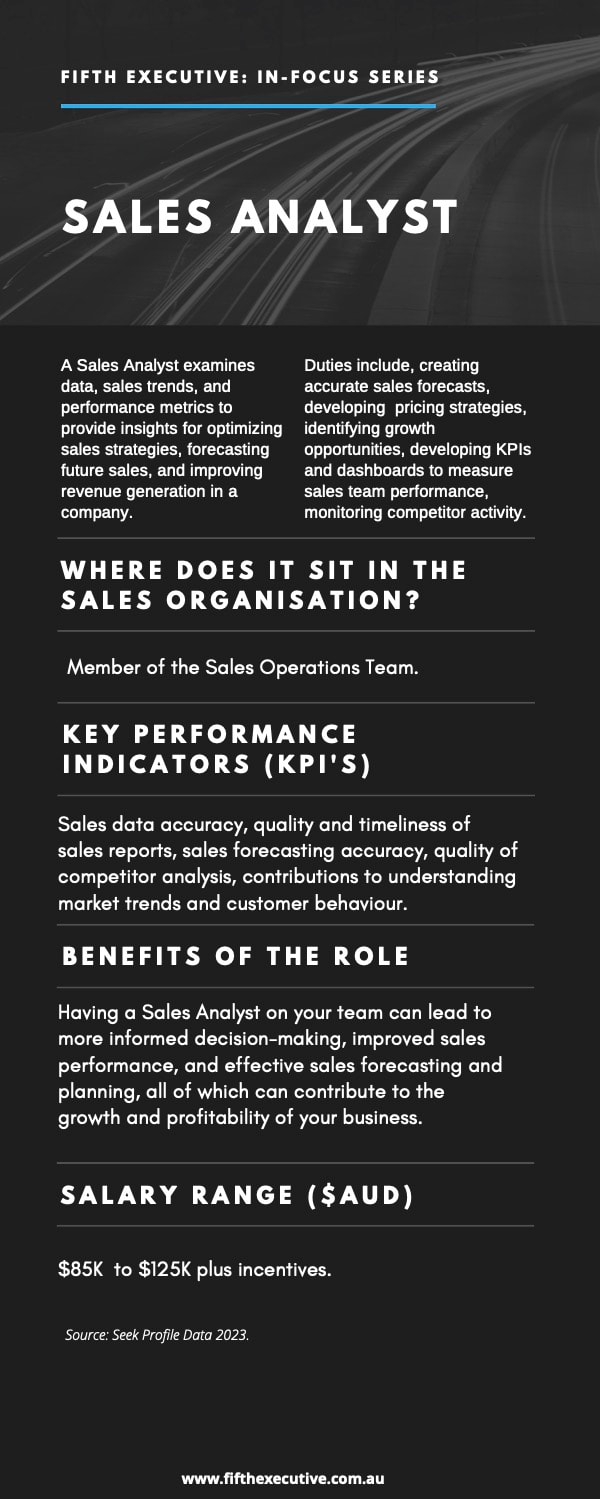|
Sales strategies can significantly impact a company’s success, and two common approaches to structuring a sales team are Inside Sales teams and Outside Sales teams. Each method has unique characteristics and requires distinct skills to be effective. By understanding these differences and the skills needed, businesses can better equip their sales teams to maximise performance and drive growth.
Inside Sales Teams Definition and Characteristics Inside sales teams operate primarily from within an office environment, using phones, emails, video conferencing, and other digital communication tools to engage with prospects and customers. This approach leverages technology to facilitate communication and manage sales processes remotely. Key Characteristics of Inside Sales Teams:
Key Skills Required for Inside Sales Teams:
Outside Sales Teams: Definition and Characteristics Outside sales teams, also known as field sales teams, operate primarily in the field, engaging with prospects and customers through face-to-face meetings. This approach is often used for high-value sales, complex products, or services that require a personal touch and direct interaction. Key Characteristics of Outside Sales Teams:
Key Skills Required for Outside Sales Teams:
Comparing Inside and Outside Sales Teams While both inside and outside sales teams aim to drive revenue and grow the customer base, their methods and the skills required for each differ significantly.
Integrating Inside and Outside Sales Strategies For many companies, a hybrid approach that integrates both inside and outside sales strategies can offer the best of both worlds. By leveraging the strengths of each model, businesses can maximize their reach, optimise costs, and enhance customer relationships. Benefits of a Hybrid Approach:
Conclusion Understanding the differences between inside sales and outside sales teams is crucial for developing an effective sales strategy. While inside sales teams excel in efficiency and scalability, outside sales teams thrive on personal relationships and high-value deals. By aligning the skills and strengths of both models, businesses can achieve greater success and drive sustainable growth. Fifth Executive is a Sales Recruitment Specialist. In the world of sales, motivation is the driving force behind performance and results. One common strategy employed by sales managers to boost performance is the implementation of stretch targets. These are ambitious goals set slightly beyond what is considered achievable, intended to push salespeople to their limits. But do stretch targets truly motivate salespeople, or do they risk demoralising the team? This blog explores the nuanced effects of stretch targets on sales motivation, drawing from psychological theories, real-world examples, and expert opinions.
Understanding Stretch Targets Stretch targets are not just regular goals; they are ambitious, often pushing the boundaries of what salespeople believe they can achieve. The intention behind these targets is to stimulate extraordinary performance by challenging salespeople to go beyond their comfort zones. This concept is rooted in the psychological principle of goal-setting theory, which suggests that specific and challenging goals can lead to higher performance compared to easy or ambiguous goals. The Motivational Power of Stretch Targets
Potential Downsides of Stretch Targets While stretch targets have clear motivational advantages, they also come with potential risks that managers must carefully consider.
Balancing Stretch Targets for Optimal Motivation To leverage the motivational benefits of stretch targets while mitigating the risks, managers should consider the following strategies:
What does the research say? Research into this topic by Harvard University, indicates that in addition to appropriate goal setting, certain conditions must be present in an organisation for stretch targets to be viable. Their framework suggests that organisations with strong recent sales performance together with "slack" or available resources are the conditions most likely to see stretch targets achieved. On the first condition - Strong recent sales performance; a series of prior wins (like in sport) has a positive effect on the behaviours and attitudes within the sales team. "Success breeds success" as it were. Their research concludes that organisations should take bold risky decisions when they are strong, not weak/or coming off a series of losses. On the second condition - Surplus or slack resources; The Harvard study found that organisations with an abundance of resources such as money, expertise, knowledge, people and equipment were better able to try and stick with bold and even risky ideas, absorb short term losses and in general be more resilient and committed in the face of setbacks. Those organisations with less resources tended to be less resilient and jump between band aid type approaches. Conclusion Stretch targets, when implemented thoughtfully can be a powerful motivational tool for salespeople. They enhance focus, foster a sense of achievement, stimulate competitive spirit, and drive skill development. However, it is crucial for managers to balance ambition with realism, provide continuous support and resource allocation, recognise efforts, and monitor well-being to prevent burnout and demotivation. Fifth Executive specialises in the recruitment of sales personnel. Buyer's intent is a critical aspect of any sales strategy, encompassing the motivations and considerations that lead a potential customer to make a purchase. Understanding and leveraging these key elements can significantly enhance a business's ability to connect with its target audience and drive successful conversions. Understanding the typical stages a buyer goes through is key to ensure the right messaging at each stage.
Research and Information Gathering: Buyers often start their journey by researching products or services. Acknowledging this phase and providing accessible, accurate, and relevant information is crucial. Content marketing, informative product descriptions, and easily navigable websites play pivotal roles in catering to this element of buyer's intent. Problem Recognition: Buyers begin their journey with a recognition of a problem or need. Your product or service should align directly with addressing these pain points. Highlighting how your offering provides a solution to specific problems can effectively capture the buyer's attention and interest. Evaluation of Options: The modern marketplace offers a plethora of choices. Buyers intend to evaluate different options before making a decision. Providing clear differentiators, such as unique features, benefits, or competitive pricing, can sway the buyer towards your offering during this crucial stage. Comparison Shopping: Buyers often compare prices, reviews, and features across various platforms. Ensuring that your product/service stands out positively in these comparisons is key. Transparency and authenticity play a significant role in building trust during this phase of buyer's intent. Decision-Making Factors: Buyers consider various factors when making a decision, including cost, quality, brand reputation, and customer reviews. Tailoring your messaging to address these factors can help influence the decision-making process in your favour. Social Proof and Reviews: Positive reviews and social proof can strongly impact buyer's intent. Encourage satisfied customers to leave reviews and testimonials. Leverage social media to showcase user-generated content and testimonials, providing potential buyers with real-world examples of your product or service's value. Post-Purchase Support: The buyer's journey doesn't end with a purchase; post-purchase support is crucial. Providing excellent customer service, clear communication, and resources like user guides can enhance the overall experience. A positive post-purchase experience contributes to customer loyalty and potential repeat business. Personalization: Understanding the individual needs and preferences of buyers can significantly impact their intent. Utilize data-driven insights to personalise marketing messages, product recommendations, and overall customer interactions. Personalization demonstrates a commitment to meeting the unique requirements of each customer. Emotional Connection: Many purchasing decisions are driven by emotions. Building an emotional connection between your brand and the buyer can create a lasting impression. This can be achieved through storytelling, aligning with values, and showcasing the human side of your business. There are a number of Buyer Intent data tools on the market which can show you which companies are active in the buying cycle and can increase operational efficiencies in this area. In choosing a tool, it’s also important to make sure that it integrates with your current CRM/Sales Stack. In conclusion, buyer's intent is a multifaceted process influenced by various factors. Recognizing the stages of this journey and tailoring your strategies to align with buyer expectations can significantly enhance your ability to attract, engage, and convert potential customers. By addressing research, problem recognition, evaluation, and decision-making factors, businesses can build a comprehensive approach that resonates with their target audience and ultimately drives successful outcomes. Fifth Executive is a specialist, Sales Recruitment Agency. Transitioning from an operationally led organisation to a sales-led one is a strategic shift that requires careful planning and consideration. While operational efficiency is vital, a sales-led approach emphasises revenue generation and customer acquisition. Beyond the hiring of sales/account management staff, here are some key considerations for organisations about to undergo this transformation. 1. Cultural Shift: Moving from an operationally led culture to one that prioritises sales requires a cultural shift. Employees need to embrace a sales mindset, focusing on customer relationships and revenue generation. Leadership should communicate the importance of this change, emphasizing collaboration between departments, adaptability, and customer-centric values. Leadership commitment is crucial for the success of this transition. Executives must champion the shift to a sales-led model by providing clear direction and support. This includes investing in sales training, incentivizing sales performance, and aligning organisational goals with sales targets. It’s a shift in focus from the internal (operations) to the external (the customer). 2. Customer-Centric Focus: Shifting to a sales-led model requires a relentless focus on the customer. Organizations should invest in understanding customer needs, preferences, and pain points. Building a customer-centric culture ensures that sales efforts are aligned with solving customer problems and delivering value. This intent must be shared across the organisation. 3. Sales Technology and Tools: To support a sales-led approach, organisations need the right technology and tools. Implementing customer relationship management (CRM) systems, sales automation tools, and analytics platforms can enhance sales efficiency, track performance, and provide valuable insights for strategic decision-making. 4. Target Market and Segmentation: Understanding the target market is critical for effective sales. Organisations need to identify and segment their target audience, tailoring sales strategies to meet the specific needs of different customer segments and sub-segments. This targeted approach enhances the relevance and effectiveness of sales efforts. 5. Performance Metrics: Shifting to a sales-led model requires a re-evaluation of performance metrics. While operational metrics like efficiency and productivity remain important, sales metrics such as conversion rates, customer acquisition costs, net promoter scores and lifetime value become central. Establishing clear, measurable goals helps track progress and adjust strategies accordingly. 6. Cross Functional Collaboration: While emphasizing sales, it's essential to maintain collaboration between sales and operations. Seamless coordination ensures that operational processes support the sales effort. Regular communication and feedback loops between these departments are crucial for addressing challenges and optimising overall organisational performance. A sales-led organisation also thrives on wider cross-functional collaboration. Departments such as marketing, product development, and customer service need to align their efforts with the overarching sales strategy. This collaboration ensures a holistic approach to customer engagement and satisfaction. 7 Incentive Structures: Aligning incentive structures with sales goals is key to motivating teams. Consider restructuring incentive plans to reward not only operational efficiency but also sales performance. This encourages employees to actively contribute to revenue generation and fosters a sales-driven culture. 8. Customer Feedback and Adaptability: Embracing a sales-led approach requires organisations to be adaptable and responsive to customer feedback. Regularly gather insights from customers to understand their evolving needs. This feedback loop allows organisations to adjust strategies, refine products or services, and stay ahead in a dynamic market. 9. Market Positioning and Differentiation: Clearly defining the organisation's value proposition and differentiating itself in the market is essential for successful sales. Articulating what sets the company apart helps in positioning products or services effectively, making them more attractive to potential customers. 10. Continuous Monitoring and Evaluation: The shift to a sales-led model is not a one-time event but an ongoing process. Continuous monitoring and evaluation of sales performance, interdepartmental communications, customer feedback, and market trends are crucial. Regularly revisit strategies, make data-driven adjustments, and stay agile to remain competitive. In conclusion, transitioning from an operationally led organisation to one that is sales-led requires a comprehensive and strategic “all of company” approach. It involves not only a cultural shift but also investments in training, technology, and a customer-centric mindset across every department in the organisation. By carefully considering these key factors, organisations can navigate this transformation successfully and position themselves for sustained growth and profitability. Fifth Executive is a specialist Sales Recruiter with offices in Sydney, Melbourne and Brisbane.  Effective onboarding and training of new salespeople is crucial for a company's success. It ensures that new hires understand the company's products or services, sales processes, and customer relationships. In this blog, we will discuss key strategies and best practices for effectively onboarding and training new salespeople. 1. Clear Onboarding Plan: Begin with a well-defined onboarding plan. Outline the objectives, timeline, and key milestones for the onboarding process. Clearly communicate the expectations and responsibilities of both the new salesperson and the organisation. 2. Product and Service Knowledge: Start by providing comprehensive training on the company's products or services. Salespeople should have in-depth knowledge to confidently address customer questions and objections. Use a combination of product demonstrations, documentation, and shadowing experienced team members to impart this knowledge. 3. Sales Process Training: Teach the sales process that your organisation follows. This includes prospecting, qualifying leads, conducting sales presentations, handling objections, and closing deals. Create role-play scenarios to help new salespeople practice and refine their skills. 4. CRM and Sales Tools: Familiarize new hires with the customer relationship management (CRM) system and other sales tools used within the company. Training in these systems ensures efficient tracking of leads, contacts, and deals. 5. Company Culture and Values: Emphasize the importance of the company's culture and values. New salespeople should understand how their role aligns with the company's mission and values. Share success stories and examples of employees who embody these principles. 6. Ideal Customer Profile (ICP) and Buyer Personas : Teach new salespeople about your organisation's Ideal Customer Profile (ICP) and target Buyer Personas and their pain points. Understanding the customer's perspective helps salespeople tailor their approach and offers to meet specific needs. 7. Sales Playbooks: Develop sales playbooks that outline various sales scenarios, objections, and recommended responses. New salespeople can refer to these playbooks for guidance during sales interactions. We’ve referred to this before in previous blogs; Sales stories are invaluable to new Sales staff and should be documented. 8. Mentorship and Shadowing: Assign experienced salespeople as mentors to new hires. Shadowing allows new salespeople to observe how seasoned professionals navigate sales situations and build relationships with clients. 9. Continuous Training: Onboarding is not a one-time event; it's an ongoing process. Provide regular training sessions and refreshers to keep salespeople updated on product updates, market trends, and sales techniques. 10. Feedback and Assessment: Implement regular feedback sessions and assessments to evaluate new salespeople's progress. Constructive feedback helps them identify areas for improvement and adjust their approach accordingly. 11. Goal Setting: Collaborate with new salespeople to set realistic and achievable sales goals. This provides motivation and direction, helping them measure their progress and success. 12. Technology Integration: Leverage technology for training, such as e-learning platforms, webinars, and online resources. These tools can make training materials easily accessible and allow for self-paced learning. 13. Sales Meetings and Team Building: Hold regular sales meetings to keep the team informed about company updates and sales strategies. Additionally, organise team-building activities to strengthen camaraderie and collaboration among salespeople. This is particularly important for remote sales staff and helps them stay connected with the Sales team and wider organisation. 14. Feedback Loops: Create feedback loops that allow new salespeople to provide input on the training process. Their insights can help improve the onboarding experience for future hires. 15. Gradual Independence: Gradually transition new salespeople from shadowing and mentorship to more independent work. This allows them to apply what they've learned and gain confidence in their abilities. In conclusion, effective onboarding and training of new salespeople is a multifaceted process that encompasses product knowledge, sales skills, cultural alignment, and ongoing development. A well-structured onboarding program not only equips salespeople with the necessary tools but also helps them integrate into the company culture and achieve their goals. By investing in comprehensive onboarding and training, organizations can set their sales teams up for success and drive revenue growth. Fifth Executive is a specialist Sales Recruitment Agency. Introduction
In the fast-paced world of sales, where targets, quotas, and client relationships intertwine, the tenure of a salesperson within an organisation can greatly impact its success. A stable and experienced sales team not only contributes to better customer relationships but also fosters a culture of trust and collaboration. However, the question remains: how long do salespeople typically stay in one organisation, and more importantly, how can this tenure be extended? In this blog, we investigate the dynamics of salespeople's tenure, exploring the factors that influence their longevity and strategies that organisations can implement to keep their sales teams engaged and motivated. The Average Tenure of Salespeople Sales roles have a reputation for high turnover rates, often attributed to the challenging and competitive nature of the work. According to various studies, the average tenure of a salesperson in one organization can range from 1.5 to 3 years. This relatively short duration can be concerning for organisations that invest significant resources in recruiting, training, and onboarding their sales teams. However, understanding the factors contributing to this turnover can help organisations take steps to extend salespeople's tenure. Factors Influencing Salespeople's Tenure Compensation and Recognition: Monetary incentives play a critical part in sales roles. When compensation structures are not competitive or fail to align with salespeople's efforts, they might be inclined to seek better opportunities elsewhere. Regular recognition and rewards for exceptional performance can boost morale and enhance job satisfaction. Work-Life Balance: The demanding nature of sales can sometimes blur the lines between personal and professional life. Salespeople often work long hours and may face burnout if work-life balance is not maintained. Organizations that prioritize and support work-life balance tend to have more satisfied and loyal employees. Career Development: Salespeople, like any other professionals, seek growth and advancement in their careers. Without a clear path for advancement, they might feel stagnated and explore opportunities with other organizations that promise better career prospects. One recent study showed that 70% of Salespeople that had left their organisation had done so due to lack of promotional opportunity. Managerial Support: A supportive and understanding manager can make a significant difference in an individual's tenure within an organisation. Regular feedback, constructive coaching, and a collaborative environment can contribute to job satisfaction and a sense of belonging. Company Culture: The overall culture of the organisation plays a vital role in retaining employees. If salespeople resonate with the values and mission of the company, they are more likely to stay committed. A toxic or unaligned culture can drive them away. Strategies to Extend Salespeople's Tenure Competitive Compensation Packages: Offering competitive base salaries, attractive commission structures, and performance-based bonuses can incentivise salespeople to stay. Regularly reviewing and adjusting compensation to match industry standards ensures that employees feel valued. Continuous Learning and Development: Establishing a robust training and development program not only enhances sales skills but also demonstrates the organisation's commitment to its employees' growth. Providing opportunities for skill enhancement can lead to higher job satisfaction and longer tenures. Clear Career Paths: Create a transparent roadmap for career progression within the sales department. When salespeople can envision a future with increased responsibilities and rewards, they are more likely to remain engaged and committed to the organisation. Flexible Work Arrangements: Acknowledge the need for work-life balance by offering flexible work arrangements, remote work options, or compressed workweeks. This fosters a sense of trust and empowers salespeople to manage their responsibilities effectively. Recognition and Appreciation: Implement a culture of recognition and appreciation for achievements, both big and small. This can include public acknowledgments, awards, and regular expressions of gratitude from management and peers. Regular Feedback and Coaching: Establish a feedback-rich environment where managers provide consistent feedback on performance and guide salespeople's professional development. Constructive coaching can help them refine their skills and feel invested in their growth. Engaging Company Culture: Cultivate a positive and inclusive company culture that aligns with the values and aspirations of the sales team. Regular team-building activities, social events, and open communication channels can create a sense of belonging. Mentorship Programs: Pair experienced salespeople with newcomers in mentorship programs. This not only aids in knowledge transfer but also builds a sense of camaraderie and support within the team. Experienced and successful sales people nearly always have stories as part of their sales approach. Oftentimes these stories/successes are not written down anywhere in the company and so having newcomers under the wings of a successful salesperson (even if for a short period) is a good way to assist in the sharing of these stories. Challenging Projects: Keep salespeople engaged by assigning them challenging projects that go beyond their routine responsibilities. Opportunities to contribute to strategic initiatives can invigorate their roles and boost their sense of ownership. Wellness Initiatives: Prioritise employee well-being by offering wellness programs, mental health resources, and stress management support. A healthy and happy workforce is more likely to stay loyal to the organization. Conclusion In the world of sales, where turnover is a common challenge, extending the tenure of salespeople within an organization is crucial for fostering stability, trust, and sales growth. By understanding the factors influencing turnover and implementing strategies to address them, organisations can create an environment that promotes longevity and job satisfaction. A combination of competitive compensation, continuous learning, career development, supportive management, and a positive company culture can contribute to creating a sales team that remains committed, motivated, and productive for years to come. Fifth Executive is a specialist recruiter of top sales talent. . In today's dynamic business landscape, corporate culture has emerged as a linchpin that shapes an organisation's identity, values, and behaviours. Simultaneously, the sales culture of a company defines its approach to revenue generation, customer relationships, and market positioning. The intersection of these two vital components - corporate culture and sales culture - yields a synergistic relationship that significantly impacts an organisation's success. In this blog, we delve into the ways in which an organisation's corporate culture influences its sales culture, fostering a ripple effect across the entire business ecosystem.
Understanding Corporate Culture Corporate culture serves as the heartbeat of an organisation, encompassing shared beliefs/intent, values, norms, and practices that guide employee behaviour and decision-making. It moulds the work environment, shapes interactions, and fuels the company's overall direction. Often referred to as “The way we do things around here”, a strong corporate culture is built upon a foundation of transparency, inclusivity, ethical practices, and a sense of purpose. It sets the tone for the way employees engage with one another, clients, and the wider world. Sales Culture: A Dynamic Catalyst Sales culture, on the other hand, centres on the methodologies, attitudes, and strategies employed by an organization's sales team to achieve revenue targets and build lasting customer relationships. It embodies the organisation's approach to lead generation, sales processes, customer service, and post-sales support. A thriving sales culture is underpinned by teamwork, adaptability, customer-centricity, and a relentless pursuit of excellence. It's the driving force behind an organisation's revenue generation and market competitiveness. The Intricate Web of Influence The interconnectedness between corporate culture and sales culture is undeniable. The former serves as the nurturing soil from which the latter blossoms. Let's explore some key ways in which corporate culture reverberates throughout an organization's sales culture: Values Drive Sales Approach: The core values entrenched in an organisation's corporate culture trickle down to influence the sales team's approach. If a company places a premium on honesty and integrity, the sales team is more likely to cultivate transparent relationships with clients, fostering trust and repeat business. Customer-Centricity Amplified: A customer-centric corporate culture compels the sales team to prioritize clients' needs, offering tailored solutions and exemplary service. When employees believe in putting the customer first, it creates a ripple effect that elevates the entire sales experience. Innovation and Adaptability: A culture that encourages innovation and adaptability empowers the sales team to explore new strategies, adapt to market shifts, and find creative solutions to challenges. This flexibility is crucial in a rapidly changing business landscape. Motivated and Engaged Workforce: A positive corporate culture fosters employee motivation, engagement and trust. A sales team that feels valued, supported, trusted and aligned with the company's mission is more likely to go the extra mile to meet sales targets and exceed customer expectations. Communication and Collaboration: Open communication and collaboration, hallmarks of a healthy corporate culture, facilitate effective teamwork within the sales department. When teams work cohesively, sharing insights and best practices, it leads to a more streamlined and effective sales process. Long-Term Relationship Building: A corporate culture focused on building lasting relationships reflects in the sales team's approach to client interactions. Instead of solely chasing short-term gains, the team prioritizes nurturing long-term partnerships, resulting in increased customer loyalty and retention. Employee Development and Training: A commitment to employee development embedded in the corporate culture drives continuous learning within the sales team. Well-trained and skilled sales professionals are better equipped to handle complex sales scenarios, thereby enhancing overall performance. The interplay between an organisation's corporate culture and its sales culture showcases a symbiotic relationship that extends beyond the confines of departmental boundaries. A vibrant corporate culture serves as the catalyst that can propel the sales team toward success, shaping their attitudes, strategies, and interactions. Conversely, a robust sales culture can contribute to the organisation's growth, bolstering revenue streams and fostering client loyalty. In the context of business dynamics, recognising the impact of corporate culture on sales culture is key to sustainable success. Organisations that prioritise the alignment of these two crucial aspects can stand to reap the rewards of enhanced customer relationships, improved employee morale, and a competitive edge in the market. As businesses continue to evolve, nurturing a harmonious interplay between these cultures could emerge as a strategic imperative for business success. Fifth Executive is a specialist recruiter of top sales talent. Sales Cadence refers to the systematic and structured sequence of activities and touchpoints that sales professionals follow to engage with potential customers throughout the sales process. It is a strategic approach that aims to maximize sales effectiveness by optimising the timing, frequency, and content of interactions with prospects. By implementing a well-designed sales cadence, organisations can enhance their prospecting efforts, improve conversion rates, and increase overall sales productivity.
The Importance of Sales Cadence In today's competitive business landscape, where customers are bombarded with countless marketing messages, a well-executed sales cadence plays a vital role in capturing and maintaining a prospect's attention. It provides a framework for sales professionals to establish meaningful connections with potential customers, nurture relationships, and guide them through the buying journey. A structured sales cadence helps sales teams focus their efforts on the most promising opportunities while ensuring consistent and personalised communication. It enables sales professionals to build rapport, gain trust, and understand customer needs more effectively, ultimately leading to higher conversion rates and improved customer satisfaction. Designing an Effective Sales Cadence Creating a successful sales cadence requires careful planning and consideration. Here are some key elements to consider when designing an effective sales cadence: 1. Define Buyer Personas: Understanding your target audience is fundamental to tailoring your sales cadence effectively. Develop detailed buyer personas that outline the characteristics, motivations, pain points, and preferred communication channels of your ideal customers. 2. Determine Touchpoints: Identify the optimal channels and touchpoints for engaging with prospects. This may include phone calls, emails, social media interactions, personalised video messages, or in-person meetings. The choice of touchpoints should align with your buyer personas and their preferred communication methods. 3. Establish Timing and Frequency: Determine the appropriate timing and frequency of each touchpoint. It is crucial to strike a balance between being persistent enough to stay on a prospect's radar without becoming intrusive or overwhelming. Consider factors such as the prospect's industry, buying cycle, and the complexity of your product or service. As a rule of thumb, A typical sales cadence can last between 2 - 4 weeks and has not more than 5 days between contacts. 4. Craft Compelling Messaging: Develop engaging and personalized messaging for each touchpoint in your sales cadence. Tailor your content to address the specific pain points, needs, and goals of your prospects. It should be about them and not about you. Effective messaging (written or spoken) should be concise (a few lines rather than a few paragraphs), persuasive, and focused on the value your solution can provide. 5. Use Automation and Personalization: Leverage sales automation tools to streamline and scale your sales cadence. Automation can help schedule and track touchpoints, manage follow-ups, and provide insights into prospect engagement. However, it is essential to balance automation with personalisation to ensure a human touch and avoid coming across as impersonal or robotic. Take a look at Tech- Powered Sales by Justin Michael and Tony Hughes who are thought leaders in this area. 6. Continuously Iterate and Optimise: Monitor and analyze the performance of your sales cadence regularly. Collect data on response rates, conversion rates, and customer feedback to identify areas for improvement. Adapt and refine your sales cadence based on these insights to enhance its effectiveness over time. There is no one size fits all when it comes to designing your sales teams Sales Cadence. The frequency and method of contact will depend upon factors such as; the complexity of the product/service you are selling, the different buyer personas within your prospect organisations and their buying cycles. Fifth Executive is a specialist, sales recruitment agency that identifies and sources top sales talent for its clients. Sales is a dynamic and demanding field that requires a unique set of skills and qualities. Effective salespeople possess the ability to build relationships, communicate persuasively, and close deals successfully. With their expertise in the art of selling, it is often assumed that good salespeople would naturally excel in sales management roles. However, the question remains: Do good salespeople make good sales managers?
Transitioning from an individual contributor to a managerial position requires a significant shift in responsibilities and skill sets. While exceptional sales skills are undoubtedly valuable, the qualities that make a person a successful salesperson may not necessarily translate into effective sales management. Let us delve into this question and explore the nuances of salespeople transitioning to managerial roles. First and foremost, one of the primary challenges for successful salespeople transitioning into management is the shift in focus. Sales professionals are accustomed to meeting their individual quotas and driving their personal success. As managers, their responsibilities expand beyond their personal achievements to the success of the entire sales team. The ability to lead and motivate a diverse group of individuals is crucial, as it directly impacts the team's performance and overall sales outcomes. While a good salesperson may have exceptional self-motivation, motivating and guiding a team requires a different skill set altogether. Furthermore, sales managers must possess strong leadership qualities. They need to provide guidance, set expectations, and foster a collaborative environment within the team. Effective leadership entails coaching and mentoring, ensuring that the sales team members have the necessary resources and support to achieve their goals. A salesperson who excels in individual selling might struggle with transitioning to a leadership role, as their focus is naturally oriented towards their personal success rather than developing others. Another factor to consider is the ability to delegate. Sales managers need to distribute tasks among their team members, leveraging individual strengths to maximize overall productivity. While top-performing salespeople often exhibit a sense of ownership and control over their work, delegating tasks and trusting others to achieve results can be a challenging transition. Effective delegation requires an understanding of each team member's capabilities, which may not have been a priority for a salesperson focused on their own performance. Communication is yet another critical aspect of sales management. Sales managers must effectively communicate goals, expectations, and strategies to the team while fostering open lines of communication for feedback and collaboration. While good salespeople are often adept at communication in a one-on-one context, managing a team necessitates clear and concise communication to ensure everyone is aligned and working towards a shared objective. Additionally, sales managers are responsible for strategic planning, analyzing data, and making informed decisions to drive sales growth. While salespeople rely on their intuition and sales skills to close deals, sales managers need to employ analytical thinking to identify trends, set targets, and devise sales strategies. These skills may not have been at the forefront of a salesperson's repertoire, making the transition to a managerial role more challenging. However, it would be remiss to dismiss the value of sales experience when it comes to sales management. Good salespeople bring a wealth of industry knowledge, customer insights, and an understanding of the sales process to their managerial roles. They can provide guidance and mentorship to their team members based on their own experiences. Additionally, their ability to relate to the challenges faced by salespeople on the front lines can foster empathy and a better understanding of the team's needs. In conclusion, while good salespeople possess valuable skills, it does not guarantee their success as sales managers. Transitioning to a managerial role requires a shift in focus, encompassing team leadership, communication, delegation, and strategic thinking. While sales experience is undoubtedly beneficial, the qualities that make a person excel in individual selling may not necessarily translate into effective sales management. It is important therefore to assess an individual's aptitude for leadership, communication and critical thought. Fifth Executive is a specialist sales recruiter, focused on identifying and sourcing top sales talent. |
The FulcrumA hub for essential ideas and information, providing leverage and support to sales professionals and those that are hiring them. Archives
July 2024
Categories |
|
©
Fifth Executive
Sales Recruitment Specialists I Executive Search I Finding Top Sales Talent I Sales Recruiting by Sales Professionals.
Vertical Divider
|
Vertical Divider
|
Fifth Executive
5/20 Bond St Sydney 2000 14/333 Collins St Melbourne 3000 9/307 Queen St Brisbane 4000 Tel: 1300 33 65 74 |










 RSS Feed
RSS Feed